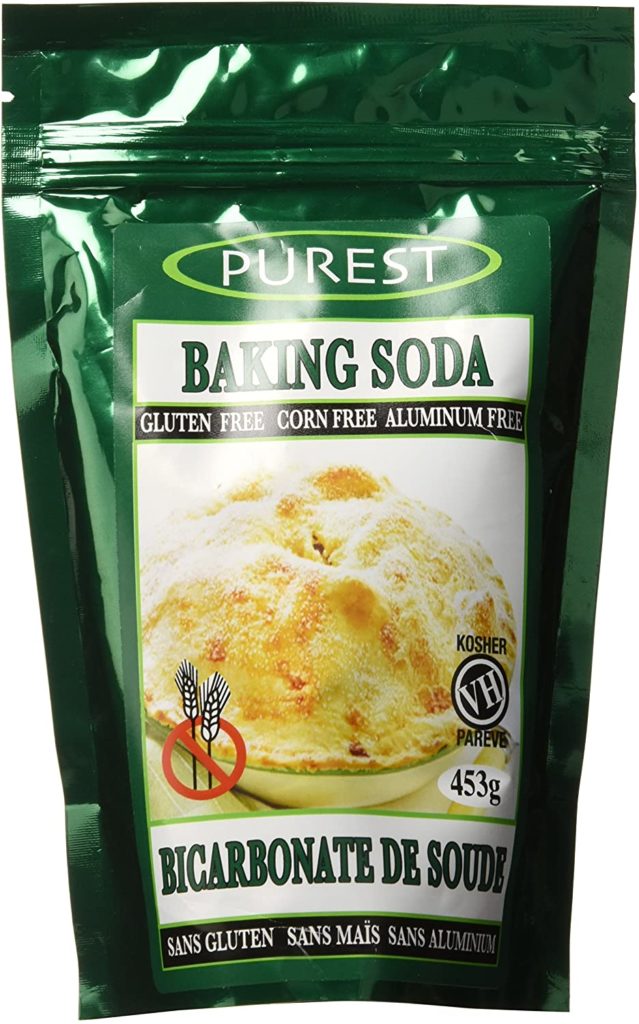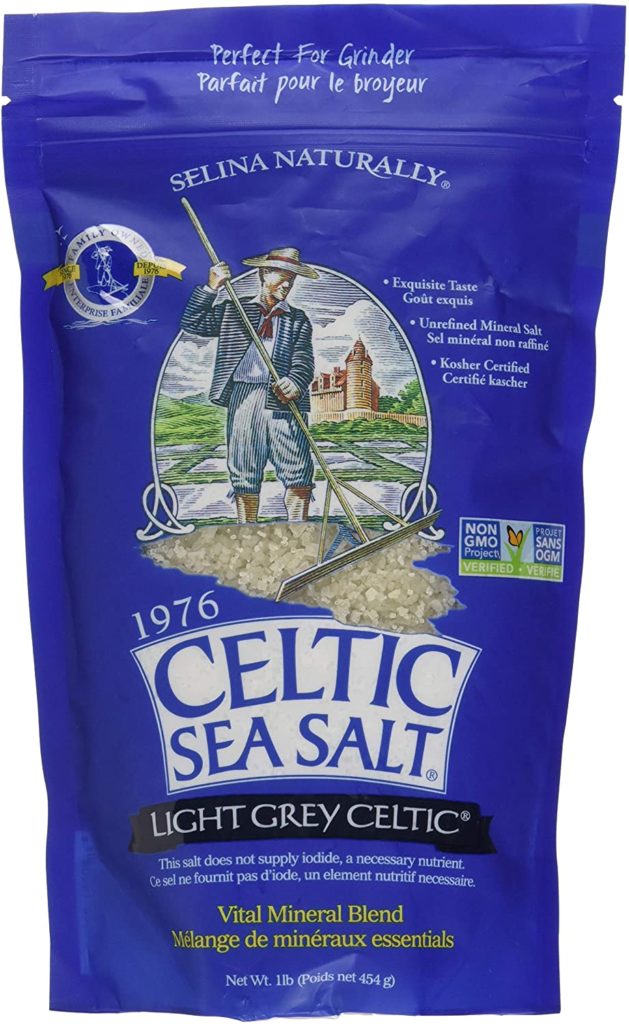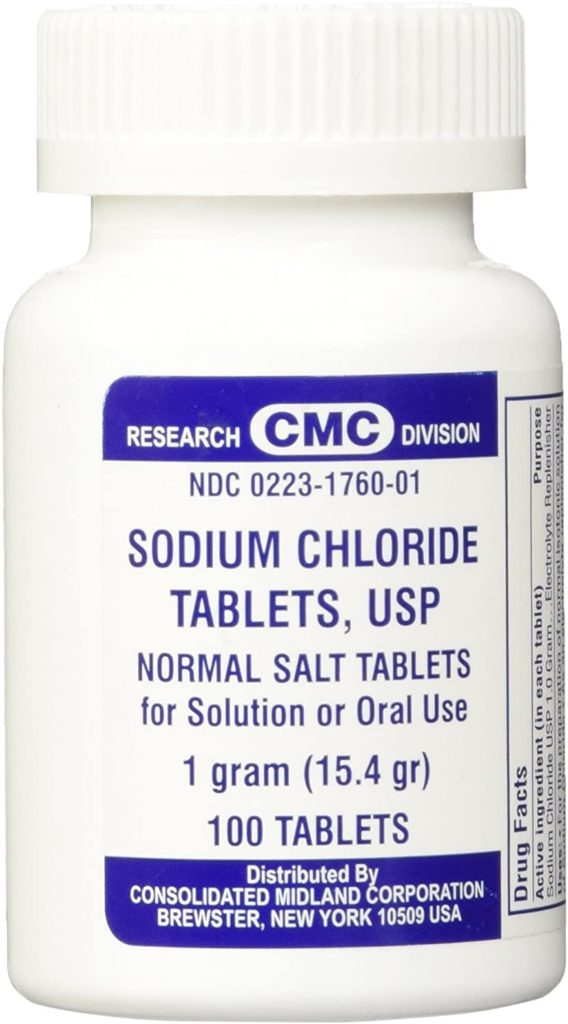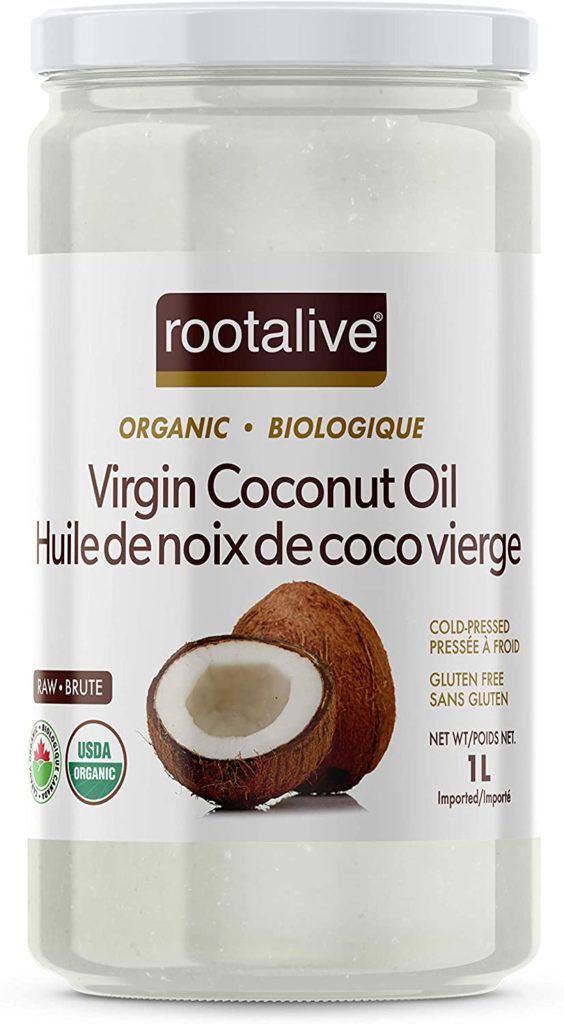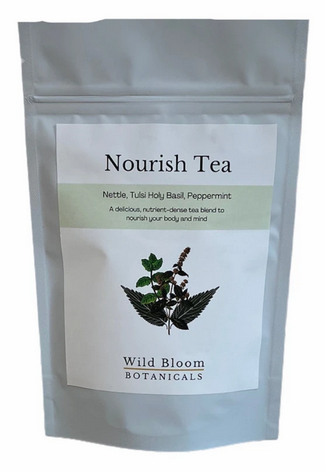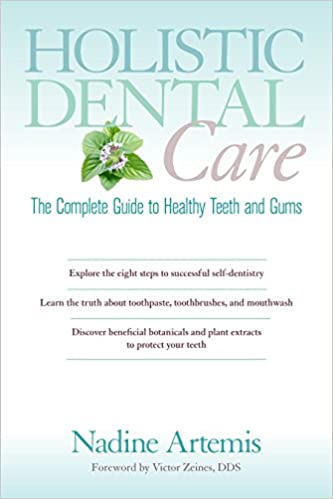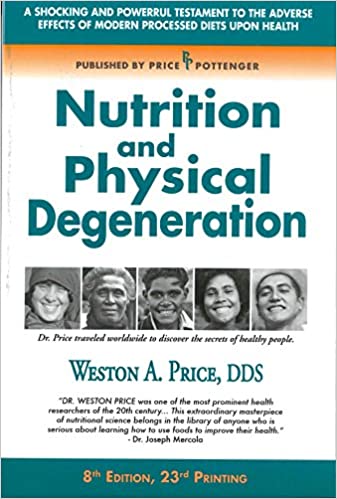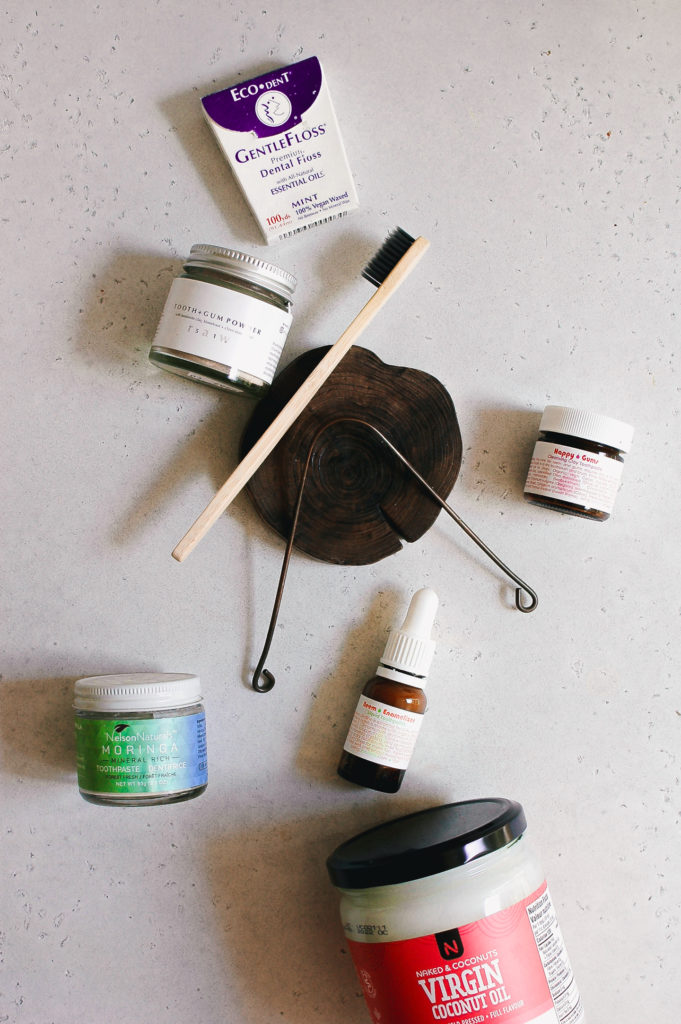
This post is dedicated to my dentist aunt Janice, and everyone who has teeth.
The mouth is a portal into our bodies. The health of the mouth is a reflection of the health of the whole body, mirroring the macrocosm of the earth. Successful oral care goes far beyond brushing and flossing, and the internal factors that nourish the teeth are so important—the mouth is a part of the whole system.
Teeth are alive and internally active, programmed to heal themselves, and given the proper environment, they can actually regenerate and each tooth even has a meridian relationship with your different organs connecting the teeth to your body’s physiological functions… I seriously wasn’t aware of this until I was 29 years old.
Even if there has been massive damage, the teeth can be repaired. In fact, research tells us that teeth with early cavity damage can heal themselves in the oral environment.
Dr. Robert O. Nara, How to Become Dentally Self-Sufficient
I grew up in the 90s on a standard North American diet which eventually turned into a junk filled conventional “vegetarian” diet in my teens. As you can probably guess, this is not conducive to any semblance of well being. I thought teeth were dead, solid bones in the mouth, set in stone. I grew up thinking that the mouth was separate from the rest of the body, then struck by how Western medicine and dentistry treated the symptoms rather than inform us of the sources or causes of body imbalances, or question or fix the core underlying causes. I developed many cavities (probably 10-20, I lost count!) and experienced malnutrition, depression, moodiness and anxiety in my teenage years.
A cavity is an infection on the tooth, and like all wounds, it has the ability to heal. It wasn’t until the past few years when I discovered through the work of Weston A. Price that teeth can actually be remineralized through omnivorous, ancestral, life changing, whole foods. As an early president of the American Dental Association, he studied the link between nutrition and teeth in cultures around the world and even had success reversing tooth decay by feeding underprivileged children one nutritious ancestral meal a day, supplemented with cod liver oil, fresh alkaline bone broths, and summer grass-fed, unpasteurized raw butter.
- Click here to read why I’m no longer vegan: my experience
In contemporary North American culture we’ve been taught to brush twice daily with toxic chemicals, floss, and get checkups to prevent tooth decay, yet we’re faced with a staggering number of cavities, crowns, root canals and extracted teeth, with more dental decay in the past 100 years than in any previous century.
We’re told that by scrubbing our teeth squeaky clean, and even bleaching (which is not recommended, ever, as this eats away at the enamel and can damage tooth nerves), we will uncover pearly whites—but hard, healthy and strong enamel only comes from within, with sufficient amounts of nutrients, minerals, and fat-soluble vitamins that create strong, white teeth.
Something is clearly missing from our oral care. Our dental dysbiosis is a reflection of the lack of symbiosis in our relationships to our bodies, global food production and industrial agriculture, medicine and the environment. On a microscopic level, everything that goes on in our mouth is what goes on in the world: systemic corrosion, mindless dumping of toxins, enamel and topsoil erosion, depleting minerals in industrialized agricultural soils, crumbling bones, mold and toxins in our buildings, triclosan in toothpaste, pollutants in the waters, glyphosates affecting our gums, guts and soil, deforestation, mercury in our mouths and seas, carcinogens, allergens, and pathogens.
When you change the state of your mouth, you end up changing the state of your world. In this article, we’ll explore various avenues to support your mouth through nutrition and a list of 20 simple, yet powerful tips to consider from ancient rituals to modern adaptations, using natural and gentle products.
Processed food = processed teeth
Aside from brushing, other internal factors that nourish the teeth include eating real foods, striking a hormonal balance, minerals, fat-soluble vitamins, maintaining an ecologically balanced and diverse microbiome, and healthy fluid exchange through the teeth. All processed food leads to tooth decay – it disrupts digestion and the endocrine system, altering the flow of nutrients to the teeth (shoutout to Weston A. Price). Sugar is basically poison – and although tooth decay is not caused by sugar itself sitting on the surface of the teeth, it is caused by sugar in the diet that depletes nutrition. We maintain healthy mouths internally when we feed our teeth with highly nutritious, organic (ideally local and regeneratively grown and raised) low glycemic foods and pure spring water.
Ancestral nutrition is inextricably connected with a powerful impact on oral health and a thriving body, and optimal nutrition levels will also allow the body to naturally detoxify properly. Teeth are living organs that require proper nutrition. Establish a baseline to build yourself up!
Some nutrition tips to consider for holistic oral health:
- Soak/sprout and ferment ALL grains, nuts, and beans to remove and evolve phytic acid that inhibits the teeth remineralization process.
- Ditch wheat, including sourdough (even if sourdough has been fermented to pre-digest the phytic acid, the beneficial enzymes are killed by the heat from baking. Once in a while I’ll enjoy it, ideally if the wheat is organic/biodynamic, preferably sprouted rye, and has not been fortified with synthetic vitamins including iron filings that accumulate in your organs). When grains are fed to animals who are then used for food, the omega-3 to omega-6 ratios in these foods are imbalanced.
- Eat fresh, sun ripened, whole foods.
- Ditch all processed foods including fake meat, refined sucrose, corn, soy, white flour, artificially fortified flours, and improperly prepared (aka not soaked/sprouted) grains. Iron filings have been added to the food supply since the 1940s, with disastrous results.
- Eat low-GI fruits and vegetables that are organic/biodynamic, grown in mineral-rich soils. Mono-cropped foods contain less minerals and nutrients.
- Eat mineral-rich foods mixed into smoothies and teas, such as horsetail and nettles (often found wild in the northern hemisphere!).
- Get sufficient sunlight on bare skin without burning and take vitamin D3 supplements ideally combined with vitamin K2. Weston Price concluded that the fat-soluble vitamins D3 + K2 reverse and inhibit tooth decay.
- Seek only wild-caught fish (not farmed and fed an unnatural diet)
- Eat a variety of ethically raised, grass finished organ meats, which are rich in vitamins and minerals like bioavailable copper. High quality, dessicated glandular supplements and dehydrated organ meat seasonings are also available if you can’t handle the delicious umami taste of whole organ meats.
- For cooking, only use grass finished, ethically pasture raised tallow, grass/whey fed lard, grass fed ghee, suet, bone broths, virgin cold pressed coconut oil, or authentic, high quality olive oil.
- Ditch industrialized mono-cropped vegetable oils (known to be carcinogenic) and PUFAs, including corn and soy oils. For salad dressings, use raw organic chia, pumpkin, olive and/or hemp oils.
- Vegetarians and vegans should be sure to get plenty of the fat-soluble vitamins K2, D3, A and E. If you’re prone to cavities like I was, you may be deficient in these fat-soluble vitamins that are most bioavailable from ethically sourced animal foods. Weston Price also noted that none of the people with solid dentition in the indigenous cultures that he observed were vegetarians. Their diets were comprised of grass fed muscle and organ meats (nose-to-tail), raw milk and butter, wild fish, eggs from free-roaming chickens, cod liver oil, fermented foods, soaked nuts, and freshly ground grains with a variety of fresh fruits and vegetables.
- Supplement food with whole wild caught cod liver to help heal cavities. Cod liver oil does not have DHA in the SN-2 position, and does not contain a complete micronutrient profile.
- Eat unpasteurized grass fed ghee or butter from cows, water buffalo or goats for vitamin K2. K2 is vital for bone growth. Get to know your small local biodynamic/organic/regenerative farmers, and support them. See yourself as part of the greater cycle of life. Invest in a large meat freezer for easy cooking. If you’re in Ontario, use code ROOTTOSKY15 for $15 off your first order at wildmeadowsfarm.ca.
- Animal foods are best when wild or pasture raised, and grass fed AND grass finished. Organic dairy products from 100% grass fed pasture raised ruminants such as cows or goats (whatever you can tolerate), are best raw.
- Drink plenty of pure spring water (or at least reverse osmosis filtered, restructured, and remineralized water).
Stress, processed foods, and inadequate nutrition negatively affect dental fluid flow and contribute to tooth decay. When we begin to understand healthy oral ecology, reversing active decay with practical steps that feed your teeth and serve your entire body, you can reduce dentist appointment stress and expensive bills, and begin to make informed decisions about the long-term health of your mouth.
Change cannot be forced, it must be embodied. Occasionally step back, check in with yourself and where you’re at, heed your body wisdom. Remember that as nature itself, we breathe in and out, sleep and wake, fluctuate. Cycle and flow.
20 tips to restore oral ecology
Optimal and preventative oral health cannot exclusively be achieved in the dental office. Oral hygiene and nutrition is the key to preventing major dental work and the consequences it can have on the body.
Dental care needs to be more accessible, so here are a few simple holistic dental care tips and tricks that have worked for me when it comes to the art of maintaining oral ecology – and even helping prevent the onset of seasonal colds. With a combination of ancient rituals and modern understanding, non-toxic products and a proper diet, these tips will get you started when it comes to the quest of supporting your mouth and whole body.
1. Stop dentinal-lymph suppressors
Ditch the processed supermarket food, sugar and chemicals that disrupt endocrine function.
2. Stop spikes in blood sugar that create insulin resistance
Maintain blood sugar at around 80.
3. Stop mouth breathing; breathe through your nose!
This may seem absurd, but chronic mouth breathing affects the way the shape of your face and jaw grows and the quality of your sleep. The nitric oxide produced from air passing through the nose is also vital to your whole body health. Assess medications, food allergies and sensitivities, sinuses, and cranial balance. Myofunctional orofacial therapy reestablishes the habitual patterns of the oral and facial muscles, and can help with teeth grinding/bruxism, sleep apnea, headaches and more. Breathe through your nose rather than through your mouth whenever possible.
4. Heal your gut microbiome/leaky gut
Eliminate gluten, corn, soy, and glyphosate irritants. Reduce candida, an invasive pathogenic yeast that excretes a mycotoxin waste product and can dig tiny holes in the intestines, allowing food, bacteria and toxins to enter the bloodstream. Consuming goat kefir is my personal favourite way to go about this. Prebiotics and probiotics including fermented foods can help reduce cavities at any stage of life. Daily use in the diet increases probiotic presence in saliva, dentinal lymph and the entire GI tract.
5. Ditch phytic acid consumption
Plants have their own built-in protective mechanisms. Phytic acid is an anti-nutrient present in many plant foods that plunders phosphorous stores in the body. Soak and ferment gluten-free grains, legumes, and raw nuts for 24-48 hours in order to reduce this anti-nutrient and make these foods more bioavailable.
6. Remove mercury fillings
Silver mercury fillings irritate gums and guts, cause gum recession, and feed pathogens. See a qualified biological dentist who follows the removal procedures of the Hal Huggins Institute for both your safety and that of the dentist’s.
7. Ditch the microbe mutators
Eliminate excessive/unnecessary antibiotics, glyphosates, surfactants, and fluoride toothpastes.
8. Stop using synthetic dental care products, and go all natural
…especially if they fall under the “May Be Harmful If Swallowed” or “Contact A Poison Control Center If Accidentally Swallowed” categories. Most toothpastes, mouthwashes and rinses available in mainstream drugstores—and even in health food/specialty stores—is a toxic sh*tstorm and should be left alone, and products for sensitive teeth only mask the symptoms by anesthetizing the mouth. Your inner cheeks and the area under your tongue are a part of an incredibly porous mucous membrane, and anything you use immediately penetrates directly through the skin into the bloodstream, irregardless of swallowing. This can lead to decomposing collagen, hindered hormones, damaged epithelium, aggravated acne, and disturbed microflora in the digestive tract, opening the gateway to suffering. Hard pass. This is why I opt for all natural tooth care products only – commercial toothpaste only gives the illusion of a fresh and clean mouth. Look for fluoride and SLS-free formulations (Jason brand toothpaste is great, I also like Living Libations, 51raw and Nelson Naturals at the moment).
9. Brush lightly
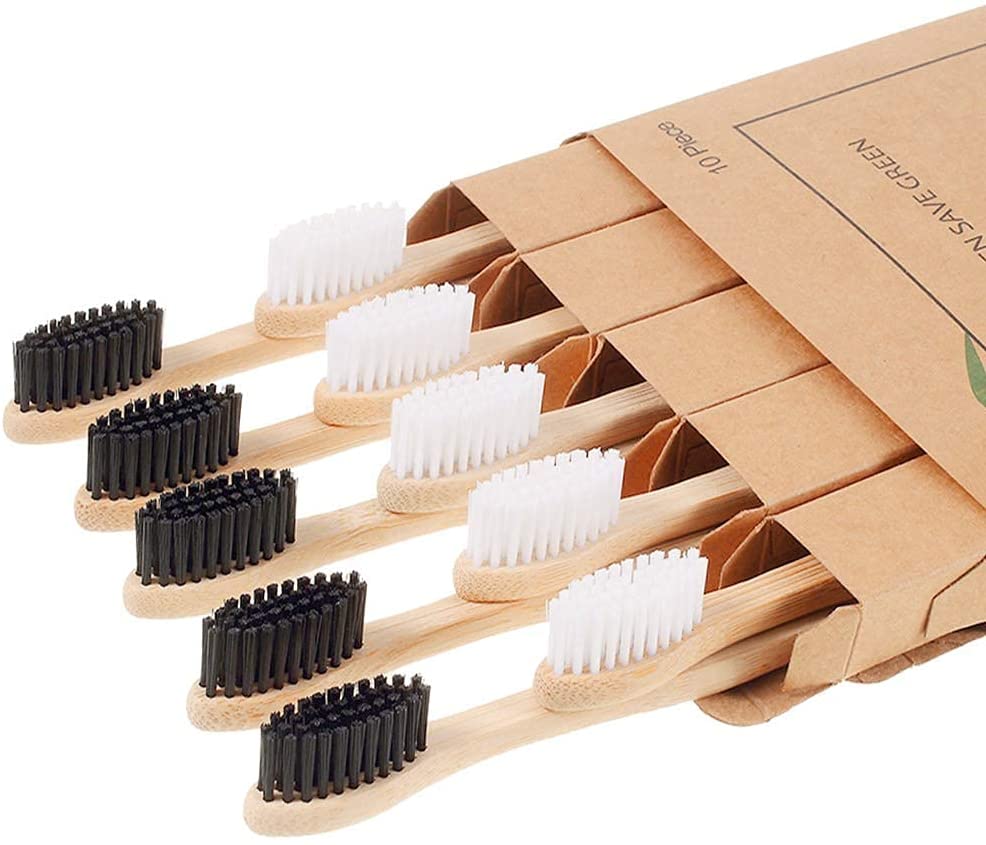
Most people think a flattened toothbrush is a sign to replace it, but it really means you’ve been brushing with too much pressure. Brush lightly enough to remove the debris, but not to the point where it’s flattened, and your brush will last you longer than the 6 months. Soft bristles are best. A dry toothbrush is more effective than a wet one as it removes more bacteria and plaque. Avoid electric/motorised toothbrushes that emit harmful nnEMFs.
10. Brush anywhere
You may have been brushing on autopilot your whole life, over the sink and under artificial lighting in haste… but why not try a more mindful approach to your daily routines? Consider the possibility of brushing anywhere. Switch it up – bring in some freshness and a different way of seeing things. Try brushing in the shower or at your desk, even outside in the sun. Personally my favourite place I’ve ever brushed my teeth is in the mountains of Iceland, outdoors under morning sunlight.
11. Remove tartar and calculus buildup by polishing the teeth with baking soda and sea salt
The whiteness of your teeth is rooted in their internal health, yet tartar and calculus can still discolour. This buildup holds onto the colour when you enjoy foods such as biodynamic red wine, green smoothies, turmeric, blueberries, and other foods rich in colour and nutrients. The buildup can be removed easily with a tooth polish mixture of aluminum-free baking soda and sea salt in equal amounts. The sticky plaque and biofilm will be removed in 1-2 minutes. Adding a drop of a botanical oil to a homemade baking soda tooth polish can also add antifungal, antiviral, antibacterial, and lipophilic benefits that will penetrate the gums.
Why baking soda? Baking soda is gentle and biochemically similar to saliva, making it harmonious with the oral environment and a great tool for keeping your teeth clean with its preventative power. It’s also alkaline, which is exactly what the saliva needs. Sodium bicarbonate is a major element present in all bodily fluids and organs, found in the saliva, secreted by our stomachs, and necessary for digestion. Its natural alkalinity neutralizes bacterial acidity. Opt for an aluminum-free baking soda. It can also be taken as a supplement or in baking to maintain inner pH levels. Baking soda has been recommended as an effective tooth polish by experts including Dr. Hulda Clark, dentist Robert O. Nara, and Dr. Paul H. Keyes, who published a study concluding that regular brushing with salt and baking soda prevents gum disease.
Adding in some activated charcoal can further help whiten the teeth!
12. Avoid brushing your teeth right after a meal.
If you brush too soon after eating, your saliva won’t have time to recalibrate to its pH of 7 (slightly alkaline). Rinse your mouth with salt water to neutralize the saliva, then floss if you’d like. Brush morning and night, as plaque begins to rebuild within 6 hours of brushing. Likewise, avoid consuming any food or water in the AM before tongue scraping or brushing your teeth as it introduces unnecessary bacteria into your body.
13. Salt rinse with brine.
Salt eliminates microbes and makes the pH of the mouth alkaline, creating a neutral environment for brushing. This comes in handy after a meal when it is not an ideal time to brush your teeth right after. A salt rinse is also useful after eating citrus or high acid foods to neutralize the acidity. A warm salt brine rinse makes a great alternative to toxic mouthwashes.
Salt rinse recipe: in a glass Mason jar, dissolve 1 part salt to 4 parts hot, nearly boiling spring water or filtered water (no fluoride, no chlorine) – it will turn into a brine. To use the salt water rinse, swish a bit in your mouth, then spit.
Sea salt is great for cooking, but Dr. Hal Huggins recommends using only pure sodium chloride (purified salt) for oral care purposes rather than sea salt, as sea salt has nonbiological potassium in it and if not sourced properly, often harbours toxins like lead, mercury, cadmium and other heavy metals. Sea salt has also lost its natural electrical charge – sodium, potassium and chloride are all involved in an important electrical exchange within the body’s cells. If you must use sea salt, it is best dissolved in hot water to recharge the electrons of the sodium and potassium.
Alternatively, add a small drop of essential oil and along with the brine it will cover your entire mouth, discouraging the growth of bacteria while nurturing the tissue. You can also alternate or rotate mouth rinses, whether it’s brine, magnesium, or iodine.
14. Tongue scrape.
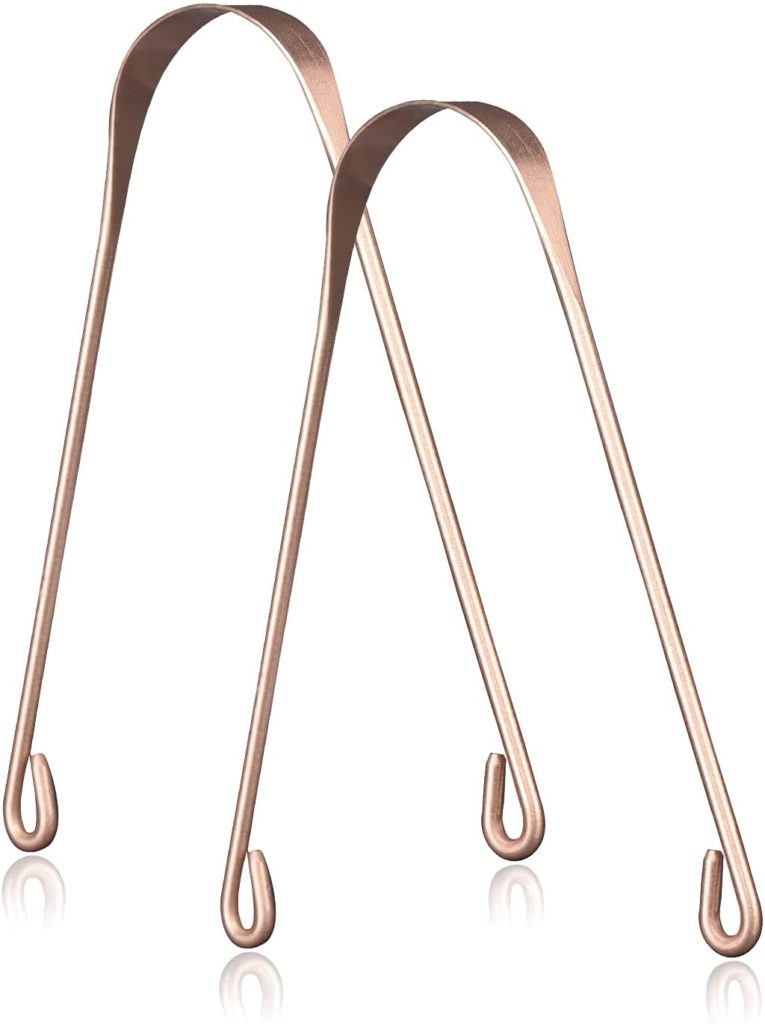
This is probably my favourite ritual ever. Once I started this daily ancient Yogic practice, I never stopped – it’s become such an absolute staple in my life, and it’s so quick and easy. The tongue hosts many microbes and mucus that migrate up from the alimentary canal, especially overnight. Scraping the tongue in the morning gently removes this coating from the tongue’s surface, improving your overall oral health. This also improves the taste of food and freshens your breath. You could even use the edge of a spoon, but I like my copper tongue scraper as copper is naturally antibacterial.
First thing after waking up, simply scrape your tongue from back to front into the sink or grass. Repeat 2-3 times (or even 8-10) until you feel your tongue is clean. Seriously—I’m never going back.
15. Oil pulling.
You may have heard of the ancient Ayurvedic practice of oil pulling therapy. This naturally whitens your teeth, freshens breath, pulls out toxins, and nourishes the teeth and gums, preventing them from bleeding.
Before bedtime, simply swish some organic coconut, olive or sesame oil in your mouth vigorously for 10-20 minutes, spit it out, and brush your teeth after. Add a drop of organic neem essential oil or organic oregano essential oil (or a combination of your favourites) to further fortify the whitening and cleaning properties of the swish.
16. Magnesium oil rinse.
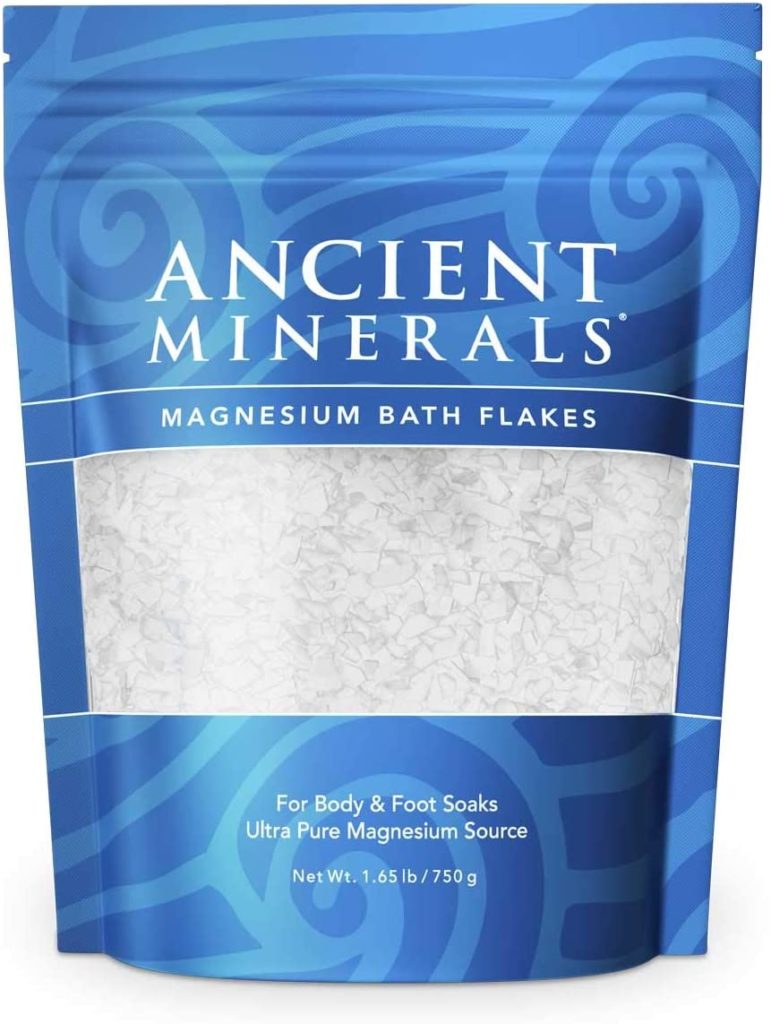
Magnesium chloride is a pure, natural element helpful for healing and strengthening teeth and tissues. It’s essential for proper calcium absorption to create strong enamel, and it’s also an essential mineral for the bone matrix. Magnesium can be taken orally in small amounts or topically where it gets absorbed through the skin, and it can also be an excellent, non-toxic mouthwash for revitalizing oral ecology.
The purest form of magnesium can be swallowed and/or used transdermally. Simply dilute to create a solution of natural liquid magnesium chloride in filtered, spring or purified water. Use a higher strength or dilute the solution depending on your oral condition. For children, it should be diluted. Use it as a mouth rinse once a day, or once a week – whenever you feel like you need it.
Click here to read my article on magnesium and for a quick and easy bioavailable liquid solution recipe: Magnesium supplement: the miracle mineral.
17. Atomic iodine mouth gargle
Another option to fortify oral health is to gargle with the atomic form of iodine. Atomic (nascent) iodine has rapid antibacterial activity, clears oral thrush, and benefits the thyroid gland. Add one drop to a glass of spring water once a week, or every other day. Consult a practitioner before supplementing iodine.
18. Mind your minerals
Bring minerals to the teeth through a mineral-rich diet. One easy way to get your minerals is through making something as simple as tea. Make one big pot of tea or sun steeped herbal infusion to enjoy all throughout the day. Place a few ounces of dry herbs into a quart sized Mason jar, fill it with near boiling water, and steep overnight. When ready to drink, strain out the herbs and enjoy. Make a batch using multiple jars so you can have them on rotation throughout the week.
A mineral-rich tea containing common wild backyard horsetail herb, nettles and dandelion (unsprayed, no pesticides) can tone the liver, the skin and digestion. Dandelion brings minerals to the teeth, horsetail is rich in silica (otherwise hard to find in even a healthy diet), and nettles are rich in calcium and iron.
Avoid calcium carbonate supplements as they’re not water-soluble or bioavailable—when ingested they can cause ailments like calcifications, kidney stones and joint issues.
19. Vital vitamins
See if you can supplement with whole food vitamin C from organic foods like oranges, guava, amla (Indian gooseberries), and camu camu berries. Create calcium in the body with dietary minerals magnesium, silica and phosphorous along with vitamins D3 and K2. Think leafy greens, spirulina, chia seeds, horsetail herb, and nettles.
Fat-soluble vitamin D3 is not a vitamin but rather a steroidal precursor hormone created mainly by the skin with direct exposure to sunlight. If you are further from the equator, it may be a good idea to supplement with natural food sources or capsules of 5000 or 10000 IU/day depending on your skin type and geographical location. Click here to read my article on the benefits of sunlight.
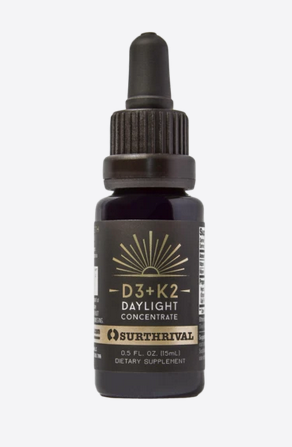
Vitamin K1 is found in leafy greens, and fat-soluble K2 is found in potent amounts in animal fat. Liquid vitamin K2 and vitamin K2 supplements made from fermented soybean natto are also available.
20. Welcome new intentions rather than worrying about implementing new habits.
As you become more intentional in the ways you build yourself up, the old habits that don’t serve you will naturally fall off. Choose what works best for you and run with it!
Holistic dental care is easier than you may think
Take it from me, you don’t want all these dental fillings which often contain BPA, aluminum, toxic heavy metals and other harmful materials (note: bio-compatible ceramic and ceramic-resin hybrids are currently the best option for a filling or restoration). Expensive and stressful dentist visits can be reduced and even avoided! If you want to experience transformation in your own life, begin to approach your decision making from a place of self love, reduce exposure and boost your resilience to many of the ubiquitous toxins without fear, and begin making choices that nurture your path. It’s never too late to begin again.
When you care for yourself as if you were your own child with the highest level of self love and self respect, it’s easy to cultivate the regular habits that help ensure you maintain healthy, strong teeth and gums, and a thriving relationship with your body. It may seem like a lot but it’s really the art of doing less. Free yourself and your children from the harmful cookie-cutter paradigm of beauty pushed by the media and “beauty” magazines. Allow the life force of the flowers, plants, sun and water be the main ingredients of healthy living, and let anything superficial and contrived fall away.
Discover more:
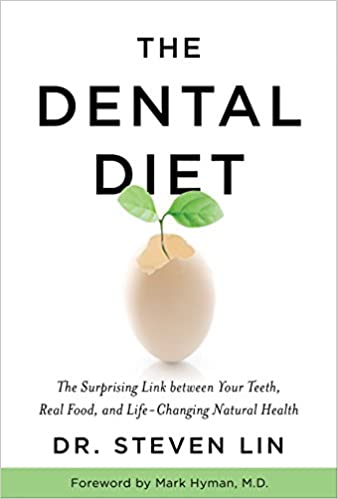
Wellness Mama: a dentist’s perspective on remineralization
Wellness Mama: Improving Oral Health episode
Wellness Mama: how to remineralize teeth naturally and reverse tooth decay
SuperFeast podcast: natural beauty, holistic self care and dental care with Nadine Artemis
Daniel Vitalis’ Rewild Yourself podcast: Successful Self-Dentistry with Nadine Artemis
Podcast: Using the dental diet to reverse dental problems with Dr. Steven Lin
Weston A. Price Foundation: Guide to Holistic Dentistry (includes links to biological and mercury-free dentists)
Weston A. Price Foundation: Diet in Relation to Dental Caries
The Guardian: Global spread of autoimmune disease blamed on western diet
Living Libations: What to ask a prospective dentist
Living Libations: Optimized oral care
Living Libations: Optimal oral hygiene for quarantine
May we prosper with pearly, remineralized teeth.
Which of the tips are you drawn to, if any, and are there any that have worked for you?
-Kelly

